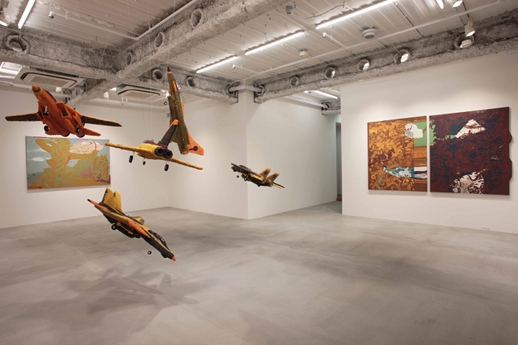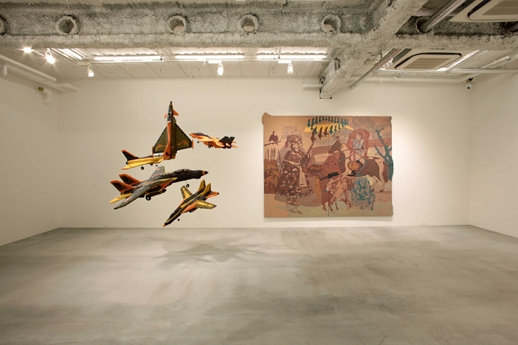Sorrowful Cries of Heritage
The March 11th Tohoku earthquake hit Japan like an unexpected slap in the face. The brute force of nature, uncalled for and undeserved, was a disaster leaving thousands homeless and crippling the capital city which ballooned into a nuclear nightmare Japan just can not seem to wake up from. As the situation continually worsens, there has been a feeling of frustration among the Japanese people against their government’s reluctance in letting them in on what’s happening. They are told to calm down and trust the experts; however, the immediate consequences of expert mishandlings are most felt by the ordinary farmer or family in Fukushima: the people kept out of the dialogue. This prolonged suffering from a force unknown and uncontrollable has fostered a shared lament towards violence, loss, and callous authorities. In this respect, Firoz Mahmud’s exhibit “Lamentation in Two Lies” is a timely show as it precisely captures this national atmosphere.
The Bangladeshi artist has traveled far from home. A graduate of both Tama Art University and Tokyo University of Art and Music, Mahmud works often in Japan, most recently in the Aichi Triennale 2010. But however far he may be from home he seems to have never forgotten his cultural heritage. The works showcased in Ota Fine Arts all deal with his country’s history with a conscious incorporation of tradition.

The “Layapa” paintings — a technique invented by the artist himself — are done in stencil and oil paint using a tradition followed in rural Bangladeshi villages. According to Mahmud, village women cover the walls of their huts with thick liquid plaster as a form of ritual, applying layer after layer of mud mixed with cow dung while praying for good luck. By following the same technique, Mahmud makes his paintings into prayers. They feature battle scenes between Bengals and British, becoming unvoiced protests by the local people, wishing only for peace and stability in everyday life. Mahmud also focuses on the opposing sides in war. The stenciled warriors and horses standing in a swirl of oil paint confront each other as if in dialogue. The ‘King (Lamenting Queen)’ and ‘Queen (Lamenting King)’ stare at one another as if to say “What’s next?”, beside “The Start of the End of a Reign of the Subcontinent” portraying the cornerstone Battle of Plassey that led to the eventual British occupation of India. In essence, Mahmud’s canvases house three voices: of the two in confrontation and of the locals.

This three-way discussion carries itself over to his fighter planes too. A smaller version of the one shown in the Aichi Triennale, the five jets titled ‘Fat Boys’ fly suspended in stop motion. Each one is colorfully decorated by green, orange, yellow and black Desi beans; its original steely exterior is lost. The beans, as signifying the local people, transform the jets from bloodless machines in to bodies pulsating with desire, hope, and angst. The little jets fly in and out of one another, playing a ruthless game of kill or be killed with wings made out of hopes and cries for life.
“Lamentation in Two Lies” is Mahmud’s cry in sorrow of a painful past experienced by his mother country. The historical aspects may escape us, but the expressed emotion we can understand. The desperate cries of Bengali villagers are in tune with the people in Fukushima and we have often found government officials looking at each other, lost, like the Indian king and queen. However, lamentation is a process and a stage to pass through. It allows us to express our grievance so as to continue on. Time passes along with history and both India and Bangladesh are independent nations now. Over two months has passed since the quake; let us too grieve, and eventually move on with renewed focus for the future.
Chisako Izuhara
Chisako Izuhara



